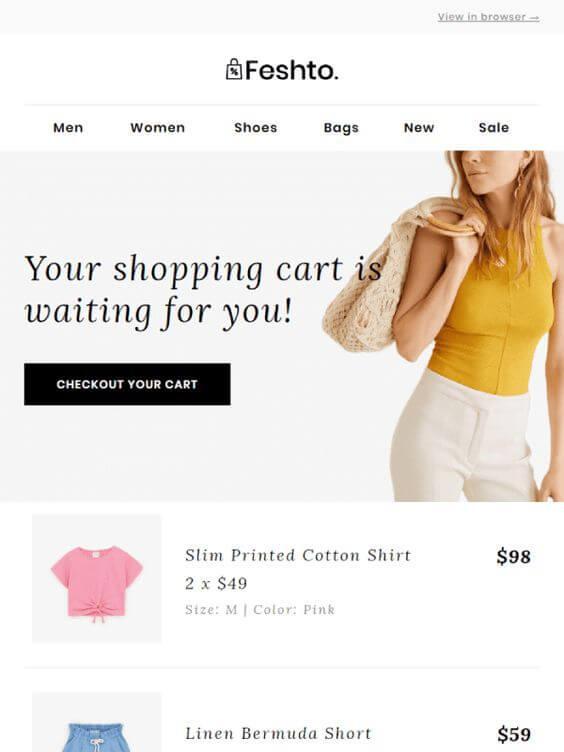29 Types Of Marketing Collateral To Effectively Promote Your Brand
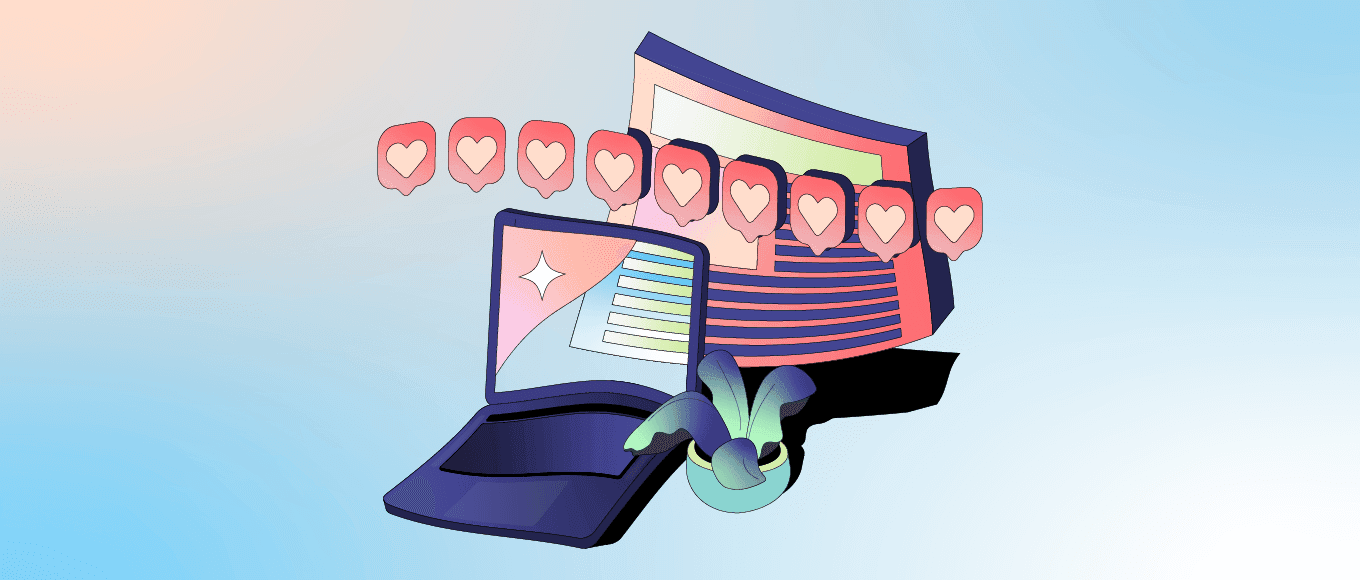 You likely wouldn’t be excited if you had to eat the same food for the rest of your life.
Boring!
However, that’s how your audience feels when you use only one type of material to market to them.
To switch things up and effectively promote your brand, it’s crucial to use the different types of marketing collateral at your disposal.
You likely wouldn’t be excited if you had to eat the same food for the rest of your life.
Boring!
However, that’s how your audience feels when you use only one type of material to market to them.
To switch things up and effectively promote your brand, it’s crucial to use the different types of marketing collateral at your disposal.
Marketing Collateral Definition:
Marketing collateral is any communication material, media, content, or asset that promotes a business’s brand, products, and services so that buyers may make informed purchase decisions and salespeople are enabled to influence profitable customer action.
1. Business Listings & Directories
Business listings or directories are online lists that contain a summary of vital information about businesses in a specific niche or location. The information typically includes the business’s name, address, contact details, and company description. These directories and listings are beneficial as they help potential customers easily find you online. Local businesses stand to gain significantly from listings as more people today search for businesses near them than ever before. You don’t have to spend before you can list your business online as you can use free sites and platforms like Google My Business, Yelp, Super Pages, etc. Here’s an example of a Google listing for a pizza place in Manhattan.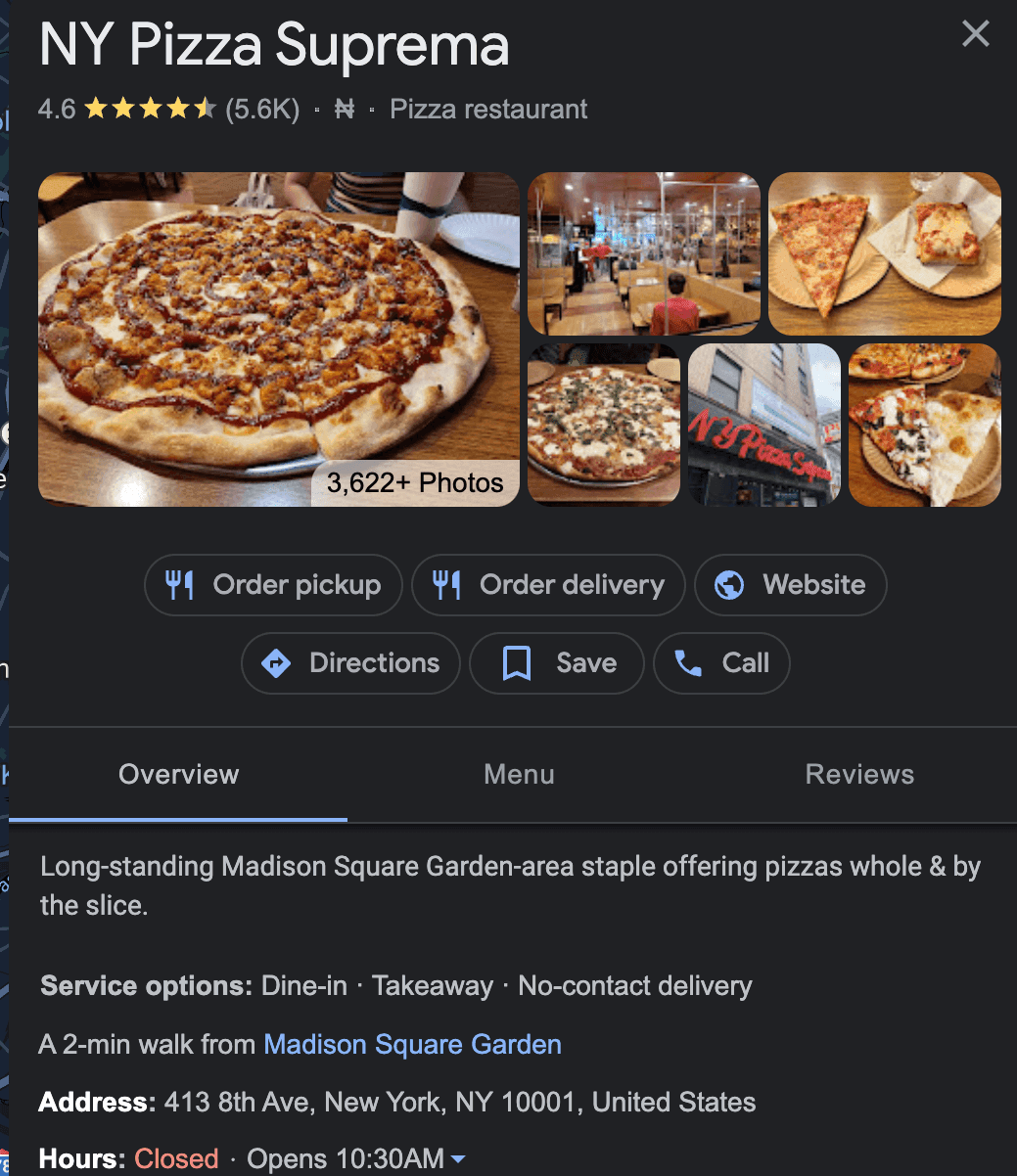
2. Product Vs. Product Content
Product vs. Product content (or comparison pages) are pieces of content created to showcase your product's uniqueness when compared to your competitor’s. Your customers are likely already asking themselves what sets you apart from the rest. So it’s only proper that they hear from the horse’s mouth. With a product vs. product page, you can paint your products in a positive light (while not bad-mouthing your competitors) so your audience can buy from you. This type of marketing collateral is common with software companies. For example, Podia’s comparison section shows how well they stack against their competitors. Source
Source
3. Brand Magazines
Corporate magazines are publications companies use to feature news articles, value and use case articles, and also showcase their products and services to customers. Although they might sometimes appear digitally, these magazines are usually printed. The magazines are expected to have an eye-catching design and contain content that educates and engages your audience. Most companies distribute this marketing collateral at in-person events or display counters at retail stores. Content Marketing Institute’s COO magazine is an excellent example of a brand magazine. The magazine shares insights and best practices to help marketers create better content and generate better results. Source
Source
4. Product Catalogs
Product catalogs are marketing collateral that contains all the essential details about your products to help people make a purchase decision. These details include the product’s name, size, weight, price, pictures, available colors, description, reviews, and price, among other things. Contrary to what you might think, product catalogs work for various businesses, not just eCommerce businesses. For instance, here’s Nestle’s catalog that details their vast array of products, from culinary to beverages. Source
Source
5. Research Reports
If you run a company that collects a ton of data, you can create digital reports as marketing collateral. These reports usually present an analysis and visualization of original data for the public. And because the reports are typically unique, it positions businesses who create them to receive a ton of backlinks. For instance, Statista offers free and paid digital reports on its website. Source
Source
6.Infographics
Infographics are a fun and visual marketing collateral you can create to engage your audience. Because of their graphic nature, infographics are handy for visualizing data, timelines, or breaking down complex subjects into a simpler and easier-to-understand format. Considering that more than half of the brain’s surface is devoted to processing visual information, it’s a no-brainer to create visual marketing collateral like infographics. In addition, the visuals and colors present in infographics help businesses sell up to 80% more. Here’s how to create an infographic in seven simple steps:- Find a topic
- Do your research
- Gather visual inspiration
- Design your infographic
- Review for consistency
- Add a call to action, credits, and sources
- Publish and share

7. White Papers
A white paper is a long-form, in-depth document that addresses a specific problem your audience faces. Because white papers are also primarily educational, research-based, and written in a serious or academic tone, they work best for people at the decision stage of your sales funnel. For reference, here is a white paper example from Verizon on stadium connectivity. Source
Source
8. Flyers
Flyers are a form of print advertisement that’s used to promote a product or service. Flyers work well for local businesses as they’re typically distributed on the streets or at storefronts. The goal of a flyer is to create awareness about a business or its new products and services. As such, it’s common practice to make flyers colorful to grab people’s attention. You can use tools like Canva, Visme, Piktochart, Adobe Spark, and so on to create your own flyers. Here’s a great flyer example from a travel company. You’ll notice that the flyer is colorful and has enough information to make someone aware of the company’s service and offer. Source
Source
9. Brochures
Unlike the other marketing collaterals we’ve mentioned already, brochures can appear both offline and online. Before the rise of the internet, companies primarily used brochures to promote their offerings to an audience through physical or in-person interactions. Although some companies still print physical brochures, many have chosen a digital format for their brochures. That way, they save money on printing and make the brochures easily accessible to their audience. Whether printed or digital, brochures work because they’re usually visually appealing and versatile. For instance, McDonald’s brochure in this example focuses on the company’s franchising opportunity.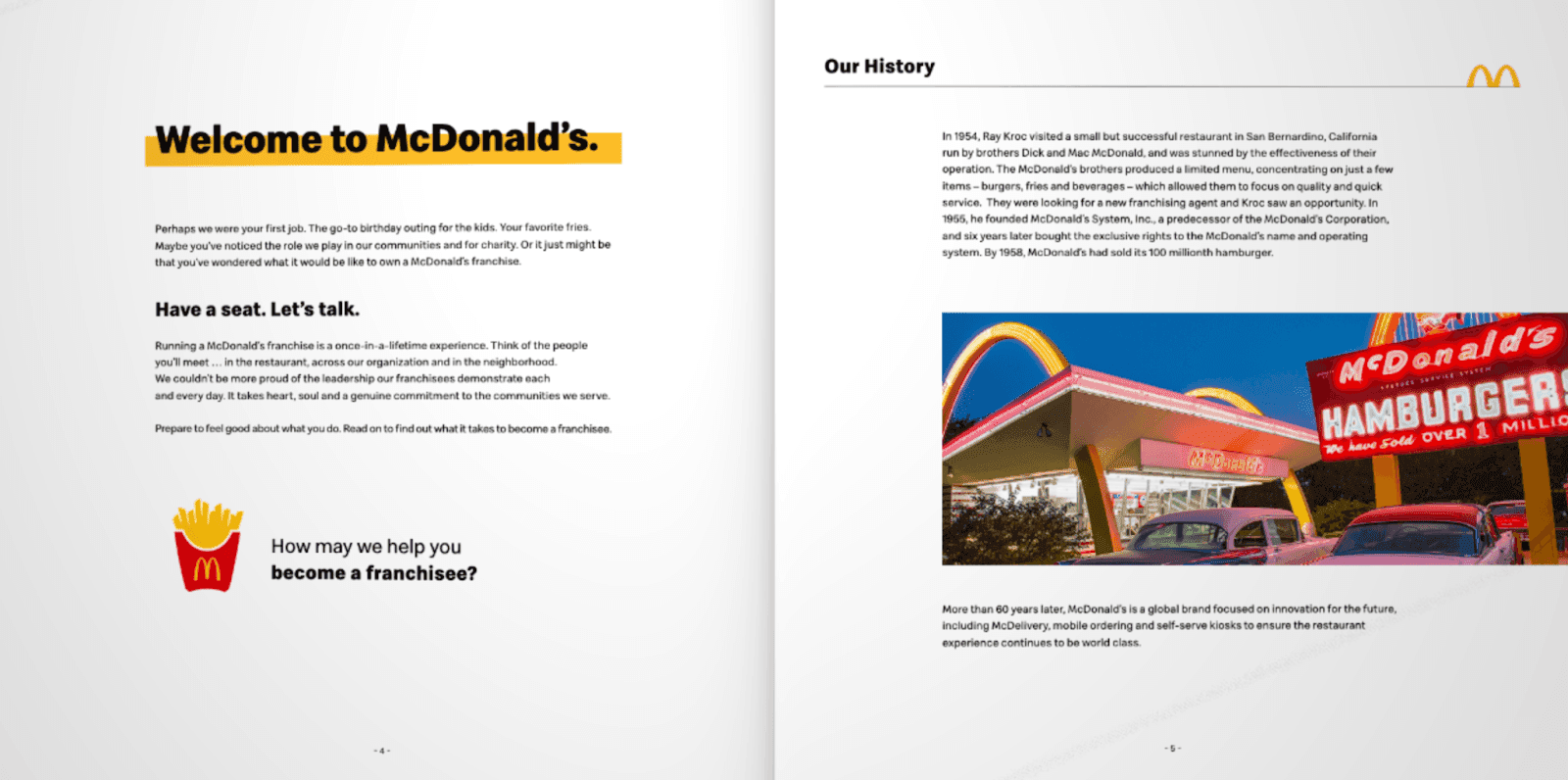 Source
No matter what you choose to do with your brochure, it’s essential to write marketing copy that attracts your dream customers.
Source
No matter what you choose to do with your brochure, it’s essential to write marketing copy that attracts your dream customers.
10. Abandoned Cart Emails
These are the types of emails you send to customers who don’t complete a purchase after adding items to their online shopping cart. Considering that over 80% of online carts were abandoned in March 2021, businesses must send abandoned cart emails to recover some of the sales they’d otherwise have lost. You can use this email example from Feshto to inspire yours.11. Webinars
Webinars, or web seminars, are video-based online presentations hosted live using webinar software. These presentations could be training sessions, workshops, or classes that aim to pass information across in real-time to an audience. Due to the pandemic, more businesses are now using webinars than ever before. And they’re finding success with it as 76% of respondents on this ON24 survey mention that webinars helped them reach more leads. Knowing the power they hold, we also use webinars here at CoSchedule.
12. Company Awards & Accolades
If you’ve just won an award, you can use it as marketing material to promote your business. These awards add to your company’s credibility and show that even your competitors recognize you as a high performer. To make the most of these awards, you can feature them prominently on your website, ask customers to share the news, or write a press release about it. We feature some of the awards we’ve received on our website to serve as social proof. You can do the same too. Sales Process Marketing Collateral
Sales Process Marketing Collateral
13. ROI Calculators
An ROI calculator is a simple tool you can use to help your audience evaluate how well their investments will turn out. The investments could be anything from typical monetary ones to marketing ones. With these calculators, you’ll be able to attract people who are already putting in the work and looking for how to improve. HubSpot has one of such ROI calculators. The calculators helps collect their audience’s contact information, as you can only download the report after providing your details. Source
Source
14. Testimonials
A testimonial is a statement from a customer or client endorsing your products and services based on their personal experience. Testimonials are vital because they serve as social proof and encourage others to buy from you. Therefore, your testimonial needs to be specific, personalized, and direct to get the most out of it. Here’s an excellent testimonial from one of our customers who used CoSchedule to create seamless workflows and improve productivity across three teams.
15. Case Studies
Case studies are created to provide in-depth examinations of how customers use your products and services to solve their problems. Because they show other customers’ success with your product/services, they’re necessary marketing collateral in the sales process. According to DemandGen’s 2021 Report, case studies are among the top content formats B2B buyers consider before making a purchase. Here’s a case study example for one of our customers we helped improve their productivity.
16. Common Objection FAQs
Sometimes, your audience might be confused or have common questions or objections about your products and services. You can answer these questions or resolve the objections by creating a common objection FAQ section on your website. A well-developed common objection FAQs section can help you attract relevant traffic (since people who have questions are already interested in your products and services) and improve your visitor’s user experience. Free Spirit’s FAQ page is an excellent example of what such a page should look like. Source
Source
17. Pitch & Discovery Decks
Are you making a presentation for new investors or at an event? If so, you’ll need a pitch or discovery deck. A pitch or discovery deck is designed to tell your company’s story through a series of slides. These slides typically talk about the problem your company solves, who it is solving it for, how it’s solving it, results you’ve already generated, and why they should invest. This is a vital marketing collateral for drumming up interest in investors and establishing your company’s value. Here’s a pitch deck example from Front, a tech startup focusing on customer communication. Source
Source
18. Product Demo Decks
A product demo deck is a vital marketing collateral that’s used during the sales process. Without a demo deck, you wouldn’t be able to showcase your product’s features and value to prospective customers. One best practice to make your product demo decks work is to use storytelling and demonstrate how your product has help a real-life customer who faced the same challenges your prospect is currently facing. Here’s what Slack’s product demo looks like. Source
Source
19. Proposal Documents & Decks
Proposals and presentations are a type of marketing collateral used to provide an overview of a business or project plan to an audience or clients. These presentations are usually prepared on design tools like Canva, Visme, and PowerPoint. As shown in the example below, the use of images and colors makes presentations an excellent medium to engage an audience. Source
Source
20. Tear & Sell Sheets / Product & Service One-Pagers
While using product demo decks is an excellent way to showcase your product’s value, there are times when you simply lack the time or resources to use these decks. So what do you do instead? This is where tear & sell sheets or product one-pagers come in. A tear & sell sheet is like a printed version of your demo deck. It contains everything a prospect needs to know about your product and how it can serve them. For the best effect, your sell sheet should have engaging copy, eye-catching visuals, and a call to action. Here’s an informative sell sheet example from iSound that can inspire you. Source
Source
21. Direct Mail
Direct mail marketing is a form of marketing where you send physical marketing material directly to your prospect’s doorsteps through postal or delivery services. You can think of it as the traditional or physical equivalent of email marketing. You can send gifts, brochures, product samples, coupons, magazines, and so on through direct mail. Businesses that use direct mail can easily measure results, send super-targeted mail and enjoy less competition. Here’s an example of how creative and effective direct mail can be. To get companies to turn off their office lights, Earth Hour sent out yellow candles in a special box that when pulled out gave the appearance of the lights going off. Source
Source
22. Business Cards
A business card is a small card bearing information about your company and what you do. Although small, these cards are essential to your branding and marketing arsenal. Whether you’re meeting a prospect for the first time, attending a seminar or event, or some other offline function, you should be ready to hand out some business cards. Your kind of business and the customers you serve often affect your card’s design. For instance, one would expect a business card for a toy shop to be more vibrant than one for a law firm. This card example below has a vibrant and playful look to it, which is totally on-brand since it’s for a nursery. Source
Source
23. Email Signatures
Although often overlooked, your email signature provides ample real estate for you to create marketing collateral. Instead of leaving your email signature area blank, include your name, position held, contact information, and company logo — all of which add to your company’s marketing whenever you send an email. Below is a simple example that can inspire you. Source
Source
24. Swag
Swag is a term used to describe items given to customers and employees with a company’s branding. Some examples of these swag items include pens, mugs, t-shirts, custom socks, etc. One of the primary reasons for handing out swag is to improve brand awareness or recognition. Using swag as a marketing collateral in your sales process works because it helps to create lasting impressions on your customers’ minds and helps them build trust in your brand. When choosing swag, ensure they align with something your customers would appreciate. For instance, it makes sense for Peloton, an exercise equipment company, to swag like water bottles — as it aligns with their customers’ need to rehydrate while working out. Source
Source
25. Welcome Kits
After a person has chosen to do business with you, it’s crucial to focus on achieving post-purchase success. A welcome kit is one of the most effective marketing collateral you can use to accomplish this. A welcome kit is a way to introduce a customer to your business formally. This kit typically contains information about your business and sets customer expectations. Most kits also include swag. Here’s an example of a welcome kit template that can inspire you. Source
Source
26. Onboarding Guides
Onboarding guides involve a set of repeatable processes you follow to welcome new customers and familiarize them with your products and services. By properly onboarding your customers, you improve the trust they have in your business, increase retention, and reduce churn. Furthermore, when customers know their way around your products, they’ll tend to be less frustrated. Your onboarding guide should include a welcome message, product walkthrough, and check-ins/follow-up messages, among other things. For instance, here are a couple of guides to help CoSchedule’s Marketing Calendar Pro users get familiar with the tool.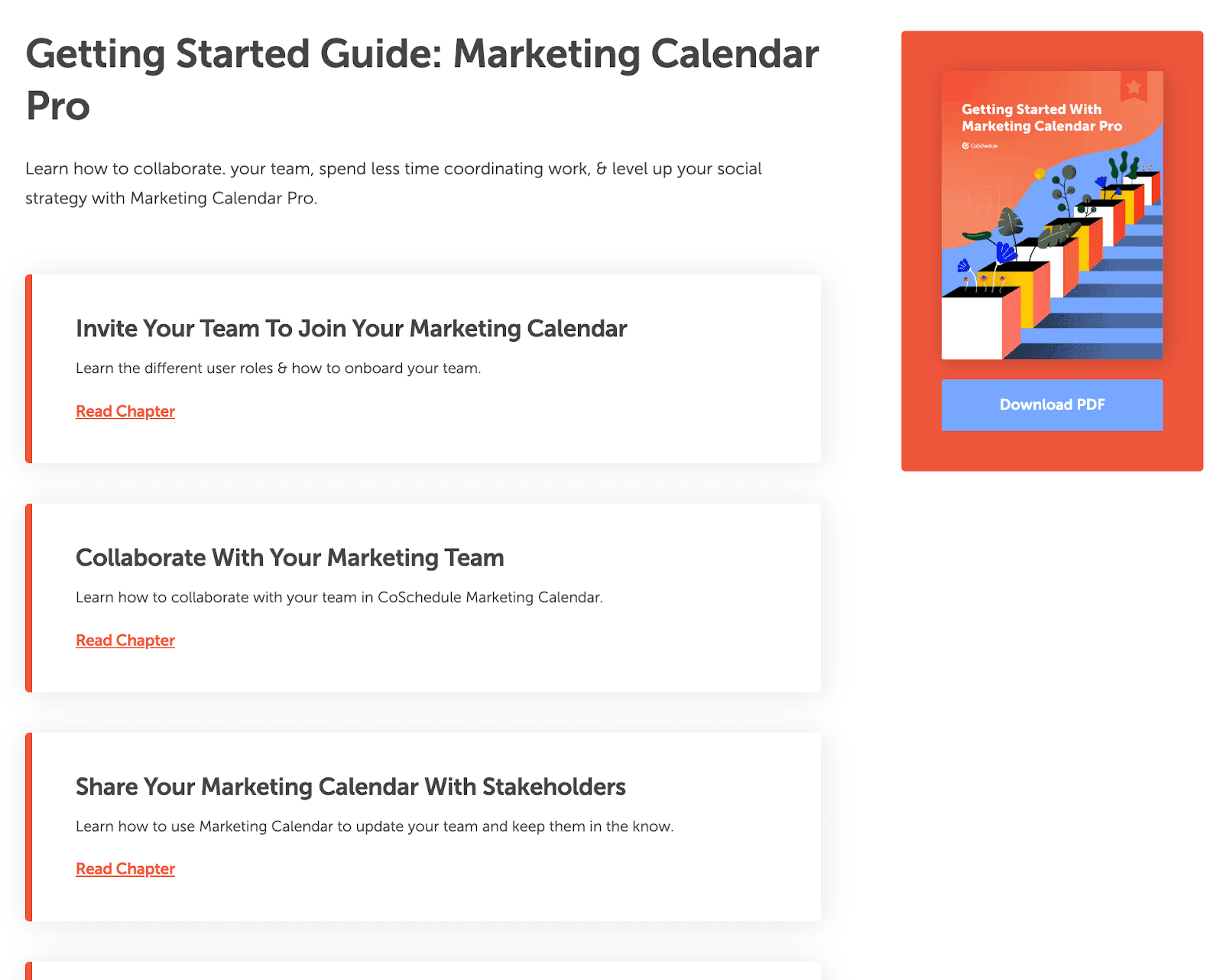 Source
Source
27. Use Case Guides
Use case guides show your customers what they can expect to achieve with your product. For instance, Person A might have a different use for your product than Person B. So, with a use case guide, you’ll be able to speak specifically to how different sections of your audience use your product. Your customer success team can easily track how your customers use your product to understand their needs and how best to improve their experience. To guide customers, Loom has an entire section on their site that discusses their tool's different use cases. Source
Source
28. Explainer Videos
As the name implies, explainer videos are videos that explain a product's or service's features and capabilities to an audience. These videos are excellent marketing collateral because you only have to create them once and show them to as many people as you want. A well-designed explainer video grabs a user’s attention, shows personality and emotions, is easily shareable and improves your site’s SEO. Here’s an explainer video example from Microsoft that shows how Azure works. How does Microsoft Azure work? https://www.youtube.com/embed/KXkBZCe699A29. Newsletters
Email marketing is one of the most cost-efficient ways to reach your customers today. Don’t take my word for it: Reports show that you get, on average, a $36 return for every $1 you spend on email marketing. One of the best ways to use email marketing is to run a newsletter. You can use your newsletter to keep in touch with your customers, promote your products, and nurture leads. At CoSchedule, we have a newsletter where we regularly share marketing tips with our subscribers.
